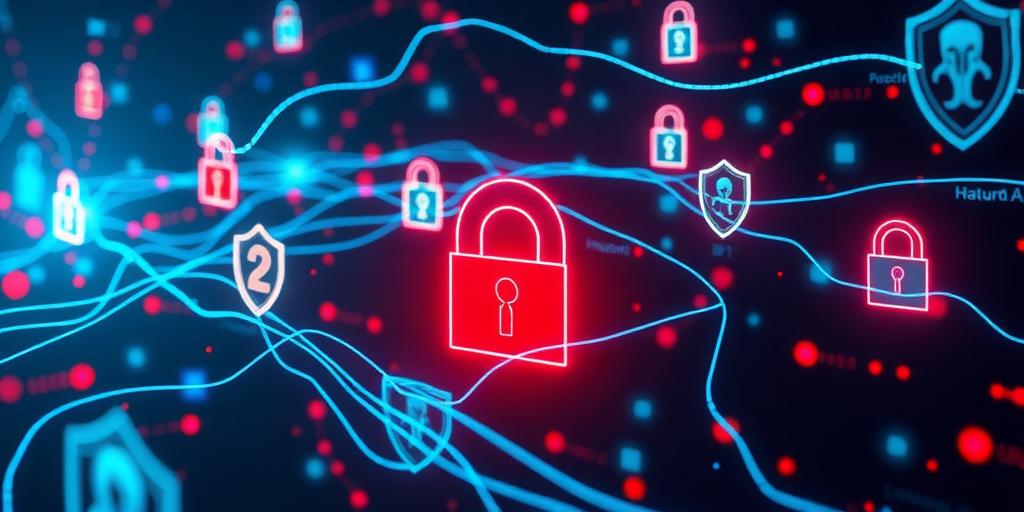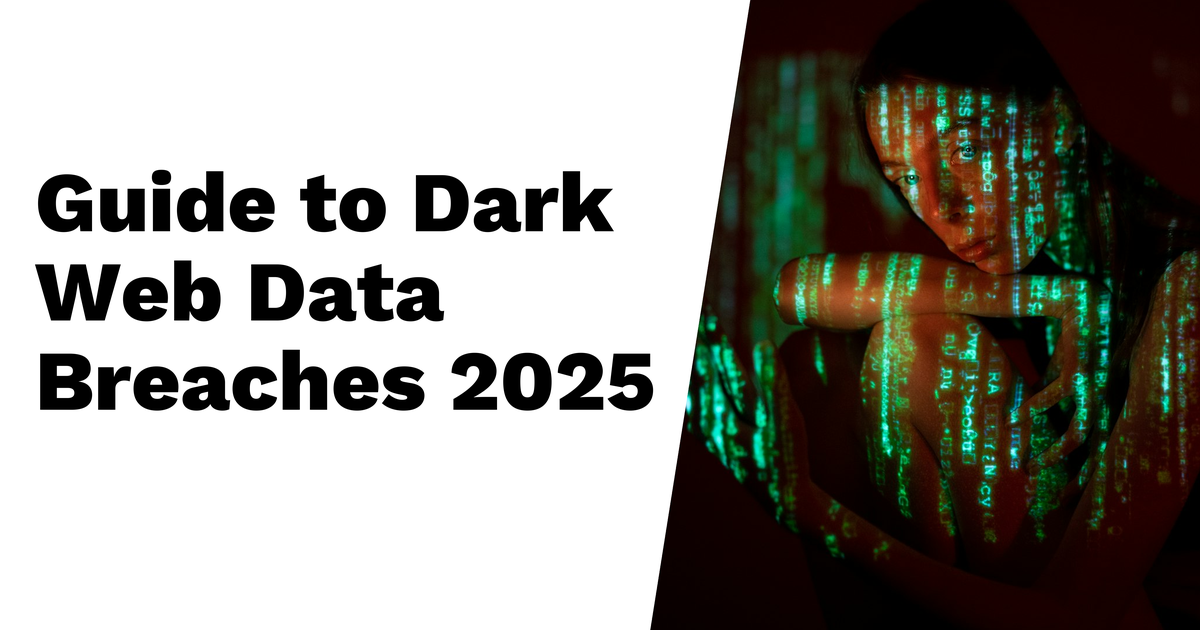In 2025, the issue of data breaches connected to the dark web is becoming increasingly serious. Organizations face greater risks, with a notable rise in third-party incidents and credential theft. Ransomware attacks are surging, making up a large portion of breaches as well. Furthermore, human errors and insider threats continue to play significant roles in these vulnerabilities. To fight back effectively, companies need strong detection strategies like dark web monitoring and automated threat detection systems. Prevention efforts should focus on multi-factor authentication and thorough training for employees to handle potential phishing scams successfully. Constant monitoring is key to staying secure against evolving threats.
Table of Contents
- Overview of Dark Web Data Breaches
- Key Trends in 2025 Data Breaches
- Detection Strategies for Dark Web Threats
- Effective Prevention Strategies
- The Role of Employee Training
- Importance of Vendor Risk Management
- Future of Cybersecurity in 2025
- Resources for Further Reading
- Frequently Asked Questions
Overview of Dark Web Data Breaches

Data breaches on the dark web have seen a sharp rise, impacting organizations worldwide. Cybercriminals are employing increasingly sophisticated techniques to access sensitive information, making it a pressing concern for businesses. Stolen data is often traded on dark web marketplaces, where it becomes easily accessible for malicious purposes. This trend is compounded by the emergence of underground forums where hackers share tools and methods, complicating the detection of breaches.
The consequences of these breaches extend beyond the targeted entities, affecting customers and partners alike. Regulatory scrutiny is tightening, with new data protection laws becoming more stringent, pushing organizations to reassess their security measures. In response, many are investing in advanced technologies designed to monitor dark web activities more effectively.
Understanding the motivations and behaviors of cybercriminals is essential for developing effective defense strategies. The pervasive fear and uncertainty surrounding data breaches often drive organizations to bolster their cybersecurity protocols. Adopting a proactive stance is critical, as waiting until a breach occurs can result in devastating impacts.
Key Trends in 2025 Data Breaches

In 2025, the landscape of data breaches has become increasingly complex. The average cost of a data breach has risen significantly, impacting organizations across various industries. Phishing attacks have evolved, with attackers employing more personalized tactics to deceive employees, making detection more challenging. The rise in breaches involving cloud services highlights alarming vulnerabilities in cloud security, as many organizations struggle to secure their remote work environments, which have become the norm.
Additionally, many data breaches are now linked to nation-state actors, complicating the threat landscape further. Supply chain attacks are also on the rise, with attackers targeting less secure vendors to gain entry into larger networks. To mitigate these risks, organizations are increasingly opting for cyber insurance as part of their risk management strategy. Collaboration between government agencies and private sectors is becoming essential in the fight against cyber threats. In response to these challenges, cybersecurity budgets are projected to increase, focusing on advanced technologies and employee training. The emphasis on incident response readiness is growing, with companies striving to minimize the impact of potential breaches.
| Trend | Statistic | Source |
|---|---|---|
| Increased Third-Party Involvement | 30% of breaches involved third parties | SpyCloud, 2025 |
| Credential Theft | 22% of breaches linked to credential-based attacks | Verizon DBIR, 2025 |
| Ransomware Surge | 44% of breaches involved ransomware, median ransom payment $115,000 | SpyCloud, 2025 |
| Human Error and Insider Threats | 60% of breaches involved human elements | Verizon DBIR, 2025 |
| Emerging Risks from Generative AI | 14% of employees used generative AI tools on corporate devices | SpyCloud, 2025 |
Detection Strategies for Dark Web Threats
Detecting threats on the dark web requires a multifaceted approach. Organizations should employ threat intelligence platforms to stay updated on emerging dark web activities, ensuring they can respond effectively to new risks. Integrating machine learning in detection systems can significantly enhance the ability to identify anomalies that may indicate malicious behavior. Regular updates to threat detection tools are vital, as cyber threats are constantly evolving, and outdated systems may miss critical indicators of a breach.
Collaboration with cybersecurity firms can provide valuable insights and resources for dark web monitoring, allowing organizations to leverage the expertise of specialists in the field. Conducting regular audits of internal systems is essential for identifying vulnerabilities before they can be exploited. Utilizing honeypots can be an innovative strategy to lure cybercriminals, offering organizations a glimpse into their attack methods and motivations.
Performing dark web scans for sensitive data associated with the organization can help reveal potential leaks or exposed information, enabling timely remediation. Automated alerts can be set up to prompt immediate action when threats are detected, ensuring that security teams can respond swiftly to potential breaches. Sharing intelligence with industry peers can strengthen collective defenses against dark web threats, as collaboration fosters a more resilient cybersecurity posture. Lastly, implementing a layered security approach enhances detection capabilities across various network points, ensuring that threats are identified and mitigated effectively.
- Employing threat intelligence platforms can help organizations stay informed about emerging dark web threats.
- Integrating machine learning can enhance the detection of anomalies associated with dark web activities.
- Regularly updating threat detection tools is crucial to keep pace with evolving cyber threats.
- Collaboration with cybersecurity firms can provide additional insights into dark web monitoring.
- Organizations should conduct regular audits of their systems to identify vulnerabilities before they are exploited.
- Using honeypots can lure cybercriminals, helping organizations understand attack methods.
- Conducting dark web scans for sensitive data related to the organization can reveal potential leaks.
- Utilizing automated alerts can prompt immediate action when threats are detected on the dark web.
- Sharing intelligence with industry peers can strengthen collective defenses against dark web threats.
- Implementing a layered security approach can improve detection capabilities across various network points.
Effective Prevention Strategies
To effectively prevent data breaches, organizations must adopt a multifaceted approach. Regular security assessments are crucial, as they help identify and address vulnerabilities before they can be exploited. By fostering a culture of cybersecurity, employees become more vigilant and prioritize security in their daily tasks. Implementing strict access controls is another vital step, as it limits exposure to sensitive data, reducing the potential impact of a breach.
Proactive threat hunting techniques can be instrumental in identifying potential security issues before they escalate. Establishing a clear data governance framework enables organizations to manage sensitive information effectively, ensuring that data handling practices are consistent and secure. Additionally, conducting simulations of potential breach scenarios prepares teams for real incidents, enhancing their ability to respond swiftly and effectively.
Investing in endpoint detection and response solutions significantly boosts an organization’s security posture, enabling faster detection and remediation of threats. Maintaining detailed logs during operations provides valuable insights during investigations, improving future responses to incidents. Furthermore, adopting secure coding practices helps minimize vulnerabilities in proprietary software, reducing the chances of exploitation.
Lastly, regular reviews and updates of security policies are essential to keep them relevant in an ever-changing landscape. By implementing these strategies, organizations can significantly strengthen their defenses against the threats posed by the dark web.
The Role of Employee Training
Employee training plays a crucial part in defending against dark web data breaches. Tailoring training programs to specific roles within the organization ensures that employees receive relevant information that applies directly to their tasks. Regularly scheduled training sessions help keep security practices fresh in employees’ minds, reinforcing their importance. Incorporating simulated phishing attacks allows staff to practice recognizing and responding to real threats, enhancing their readiness.
Real-world examples of breaches can make training more relatable and impactful, showing employees the real consequences of negligence. Providing resources for reporting suspicious activity encourages a vigilant workplace and enhances overall security. Establishing a feedback loop lets employees share their experiences, contributing to the continuous improvement of training programs.
Training should also cover key data protection laws and compliance requirements, ensuring that employees understand their responsibilities. Encouraging a sense of ownership over cybersecurity fosters a proactive culture, motivating staff to adhere to security protocols. Utilizing gamified training can increase engagement and retention of security concepts, making learning about cybersecurity not only effective but enjoyable. Finally, highlighting the consequences of data breaches can serve as a strong motivator for employees to follow security best practices.
Importance of Vendor Risk Management
Vendor risk management is crucial for organizations, especially given the rising instances of data breaches linked to third parties. Conducting thorough risk assessments can help identify vulnerabilities within a vendor’s systems, allowing organizations to address these risks proactively. Establishing security standards ensures that all vendors meet minimum cybersecurity requirements, which is essential in maintaining a robust security posture. Regular audits of vendor security practices help in verifying compliance and reducing potential risks.
Clear contracts that define security responsibilities protect organizations by holding vendors accountable for their cybersecurity practices. Open communication about security issues fosters a collaborative environment, helping both parties to stay informed and responsive to emerging threats. Implementing a vendor scorecard system can also assist in evaluating and monitoring vendor performance over time, ensuring they adhere to established security benchmarks.
Training employees on vendor risk management increases awareness of potential threats that may arise from third-party relationships, empowering them to recognize and act against possible vulnerabilities. Utilizing third-party risk management tools can streamline assessments and provide real-time monitoring of vendor security practices.
Lastly, establishing incident response protocols that include vendors ensures a coordinated approach during potential breaches. Regularly reviewing vendor relationships allows organizations to adapt to changes in the security landscape, maintaining resilience in an ever-evolving threat environment.
Future of Cybersecurity in 2025
In 2025, the landscape of cybersecurity will be shaped by several transformative trends. The integration of artificial intelligence (AI) is expected to enhance threat detection and response, making it easier for organizations to identify potential threats before they escalate. User behavior analytics will become a focal point, allowing systems to spot anomalies in user actions that may indicate malicious intent.
Quantum computing presents new challenges for data encryption, requiring organizations to rethink their security measures to protect sensitive information. The concept of zero-trust security will gain traction, ensuring that every access request is meticulously verified, regardless of whether it originates from inside or outside the organization.
Regulatory frameworks will continue to evolve, placing greater emphasis on organizational responsibility for data protection. As cyber threats become more complex, the demand for skilled cybersecurity professionals will rise, prompting increased investment in training and education. Collaboration between the public and private sectors will be crucial in combating large-scale cyber threats, as both sides share insights and resources to enhance security.
Innovations in cybersecurity will increasingly leverage blockchain technology, which offers enhanced security through decentralized and tamper-proof systems. Organizations will need to adapt their strategies to navigate this growing complexity, emphasizing a comprehensive approach that integrates people, processes, and technology. A well-rounded cybersecurity strategy will be vital for safeguarding against the myriad of threats that lie ahead.
Resources for Further Reading
Books on cybersecurity trends and best practices can provide professionals with a solid foundation and deeper insights into the evolving landscape of cyber threats. For those looking to enhance their skills, online courses covering various aspects of cybersecurity are invaluable, catering to employees at all levels. Additionally, industry reports from cybersecurity firms deliver critical insights into the current threat landscape, helping organizations to stay informed. Webinars and podcasts featuring field experts can keep organizations updated on the latest developments, offering practical advice and real-world examples. Government resources on data protection laws ensure that organizations remain compliant with regulations, which is essential in today’s legal climate. Furthermore, blogs and forums dedicated to cybersecurity provide community support and shared experiences, allowing professionals to learn from each other. Subscribing to newsletters from cybersecurity organizations can help keep teams informed about emerging threats and best practices. Research papers on cybersecurity advancements offer a more profound understanding of complex issues, while conferences focused on cybersecurity encourage networking and knowledge sharing among professionals. Finally, collaborative platforms for sharing threat intelligence can significantly enhance collective defenses against cyber threats, fostering a proactive approach to cybersecurity.
Frequently Asked Questions
What exactly is a dark web data breach?
A dark web data breach happens when sensitive information, like usernames or passwords, gets stolen and appears on dark web sites, where people can buy or sell it.
How can I know if my data has been compromised on the dark web?
You can check if your information is on the dark web using monitoring services that scan for your data on those sites, alerting you if they find anything.
What steps should I take if I find my data on the dark web?
If you discover your data on the dark web, change your passwords immediately, enable two-factor authentication, and consider reporting it to your bank or identity theft protection services.
What are some common signs that show I might be a victim of a data breach?
Common signs include receiving unexpected emails, noticing unfamiliar charges on your accounts, or experiencing issues accessing your online accounts.
How can I prevent my data from being stolen in the first place?
To prevent data theft, use strong, unique passwords for different accounts, enable two-factor authentication, and be cautious about sharing personal information online.
TL;DR In 2025, dark web data breaches pose a serious risk, driven by trends like increased participation of third parties, rampant credential theft, and a rise in ransomware incidents. Effective detection requires continuous dark web monitoring, automated threat analysis, and well-prepared incident response plans. Organizations can prevent breaches by implementing multi-factor authentication, managing vendor risks, training employees, encrypting data, and maintaining vigilant system monitoring. As cyber threats continue to evolve, a comprehensive approach to cybersecurity is essential for organizations to safeguard their assets.





